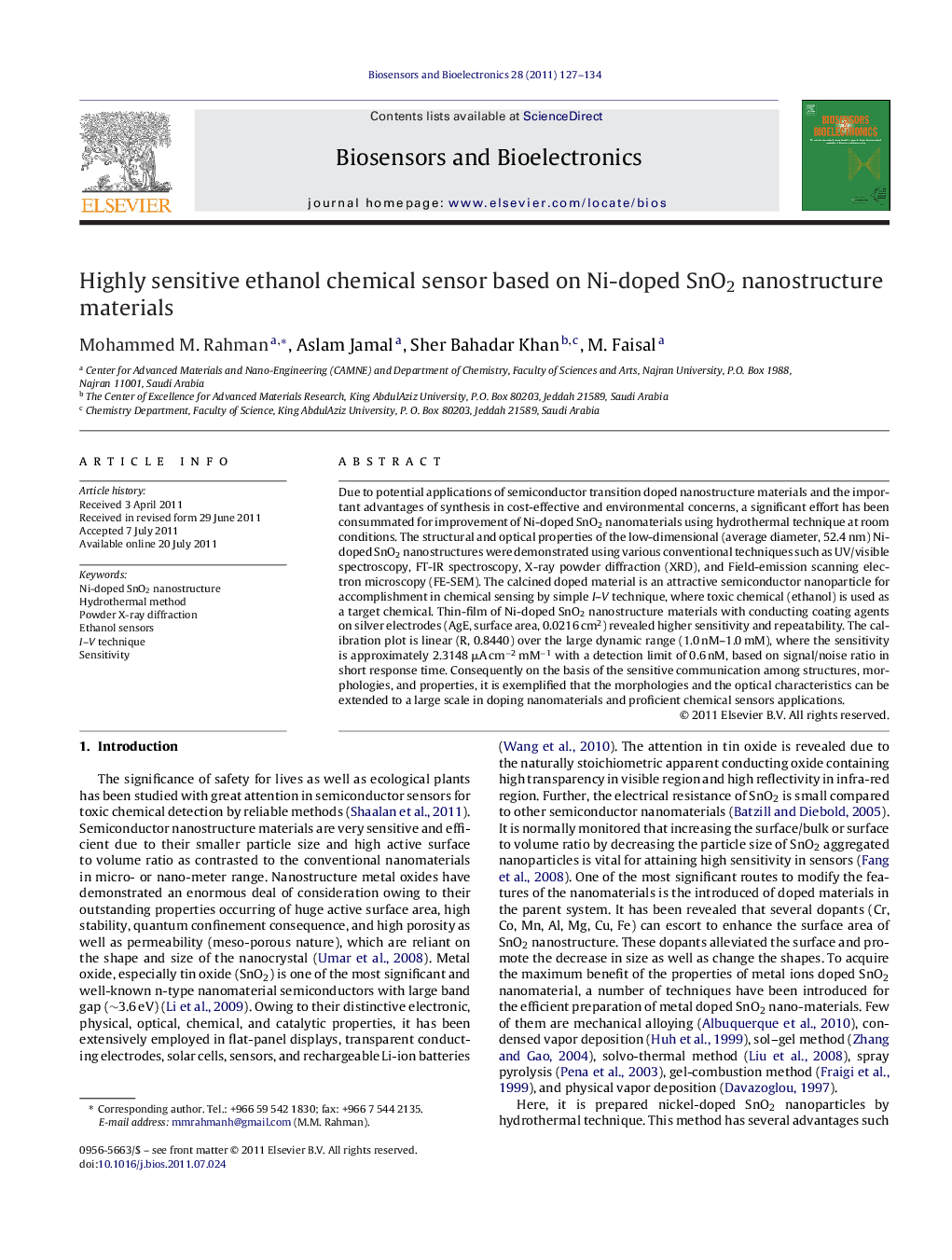| Article ID | Journal | Published Year | Pages | File Type |
|---|---|---|---|---|
| 10429460 | Biosensors and Bioelectronics | 2011 | 8 Pages |
Abstract
Due to potential applications of semiconductor transition doped nanostructure materials and the important advantages of synthesis in cost-effective and environmental concerns, a significant effort has been consummated for improvement of Ni-doped SnO2 nanomaterials using hydrothermal technique at room conditions. The structural and optical properties of the low-dimensional (average diameter, 52.4 nm) Ni-doped SnO2 nanostructures were demonstrated using various conventional techniques such as UV/visible spectroscopy, FT-IR spectroscopy, X-ray powder diffraction (XRD), and Field-emission scanning electron microscopy (FE-SEM). The calcined doped material is an attractive semiconductor nanoparticle for accomplishment in chemical sensing by simple I-V technique, where toxic chemical (ethanol) is used as a target chemical. Thin-film of Ni-doped SnO2 nanostructure materials with conducting coating agents on silver electrodes (AgE, surface area, 0.0216 cm2) revealed higher sensitivity and repeatability. The calibration plot is linear (R, 0.8440) over the large dynamic range (1.0 nM-1.0 mM), where the sensitivity is approximately 2.3148 μA cmâ2 mMâ1 with a detection limit of 0.6 nM, based on signal/noise ratio in short response time. Consequently on the basis of the sensitive communication among structures, morphologies, and properties, it is exemplified that the morphologies and the optical characteristics can be extended to a large scale in doping nanomaterials and proficient chemical sensors applications.
Related Topics
Physical Sciences and Engineering
Chemistry
Analytical Chemistry
Authors
Mohammed M. Rahman, Aslam Jamal, Sher Bahadar Khan, M. Faisal,
